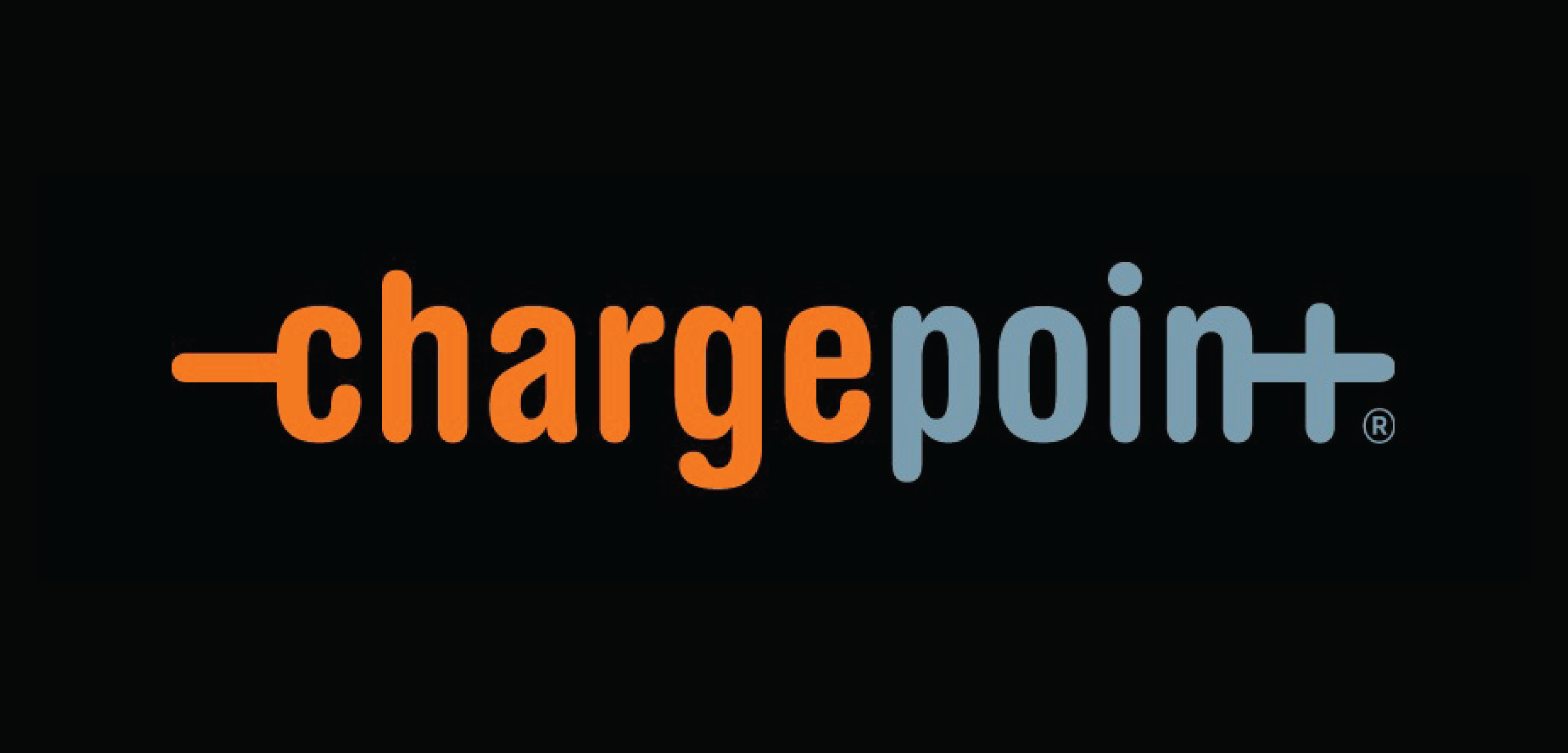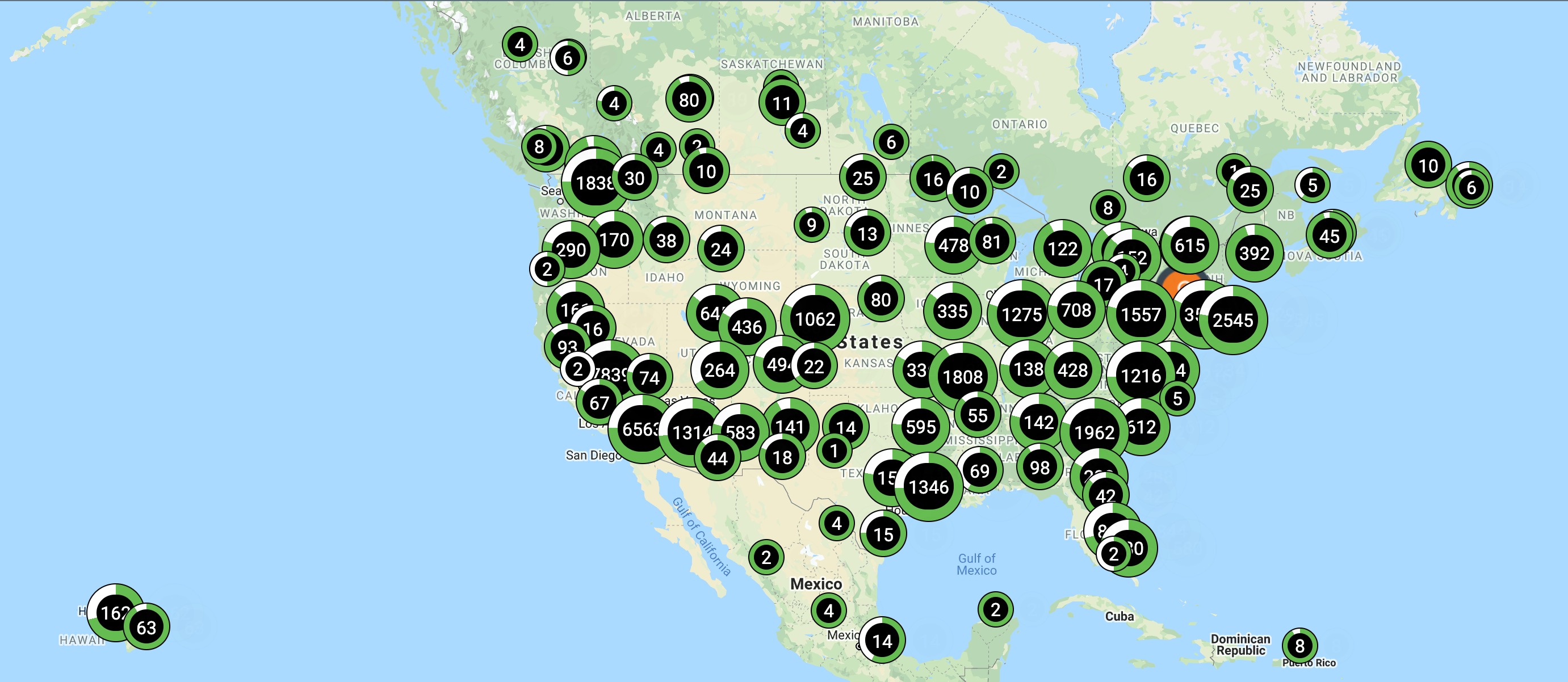Updated 1 year ago
ChargePoint charging stations can power your EV anywhere
Written by
Catherine Lane

Electric vehicles (EVs) are becoming more popular each year, but some drivers are still hesitant to make the switch. Why? It's because they're afraid of being left stranded on the road without a place to charge their car.
That’s where ChargePoint comes in. Based in California, ChargePoint has one of the nation’s largest electric car charging infrastructure networks that allows EV owners to easily find the charging location closest to them - right from their phone!
Not only that, ChargePoint also offers home charging solutions, so you’ll never be left wondering if you’ll have enough battery life to make it to your destination.
Key takeaways
-
ChargePoint’s EV charging network spans across all 50 states and can easily be accessed right from your smartphone.
-
Charging rates are determined by the owner of each individual station, not ChargePoint - so how much you pay will vary from station to station.
-
ChargePoint has two DC fast-charging stations which can also be found on their mobile app.
-
The ChargePoint Home Flex is a Level 2 residential EV charging station that can provide up to 37 miles of range per hour.
Where are ChargePoint charging stations located?

ChargePoint’s charging network is available in all 50 states. Image source: ChargePoint
ChargePoint facilitates the largest EV charging network in the U.S. Currently, ChargePoint’s network consists of over 100,000 car charging stations that span across all 50 states. EV charger locations can be found easily through the ChargePoint app or website.
ChargePoint not only tells you where the charging station is, it also lets you know:
How much it costs to charge at each station
Hours of operation
If there are any additional fees the station owner may implement
The type of charging connector at the station
The ChargePoint network consists of chargers that are compatible with every kind of EV on the road today - from BMWs to Jaguars - even Teslas.
Businesses, municipalities, universities, and more, can all have a ChargePoint charging system installed on their property. That charging station can then be registered in ChargePoint’s public charging network for EV drivers to use.
How much does it cost to charge an EV at a ChargePoint station?
The rate you pay at a ChargePoint electric vehicle charging station varies, as the station owners are the ones who are responsible for determining pricing, not ChargePoint.
Some charging stations are free, while others charge per hour. Most ChargePoint stations that you have to pay for will have rates between $4 and $5 per hour. Some stations have a charging rate-per-minute. It just depends.
Some ChargePoint stations have additional fees in place to prevent drivers from staying parked at the stations for too long. The rates could also change throughout the day, depending on local electricity prices.
Here’s an example of some rates and costs you might see at a ChargePoint station:

Image source: ChargePoint
How do you pay to use a ChargePoint station?
When you sign up for a free ChargePoint account, you will be sent a ChargePoint card. You can activate this card via your ChargePoint account, so you can easily keep track of all your charging expenses in one place.
You can either pay for your charging session through your ChargePoint card, your personal credit card at the EV charging station, or through the mobile app.
Does ChargePoint offer DC fast-charging stations?
Yes, in addition to their regular charging stations, ChargePoint does also offer public DC fast-charging stations.
DC stands for “direct current” electricity, which is the type of electricity EV batteries use to charge. Typically, a charging station provides AC, or alternating current, electricity that is converted to DC electricity by the vehicle’s “onboard charger”.
DC chargers, on the other hand, provide DC power directly to the battery, skipping the onboard charger so the battery can charge faster. The DC charging spots are powerful enough to charge your EV in under 30 minutes, making them perfect for filling up your battery when you’re on a time crunch.
ChargePoint has two different DC fast charger models:
The Express 250, which can deliver 62.5 kW of power with a standalone station, or 125 kW when stations are paired together to work in tandem; they feed off one another to deliver more power
The Express Plus, which can deliver 350 kW of power to a single EV and is designed to easily scale up if more stations are needed in the future
The ChargePoint mobile app allows you to filter for DC charging spots so you can easily find the one nearest you.
ChargePoint Home Flex: a residential charging station

The ChargePoint Home Flex can deliver up to 37 miles of range per hour, depending on the electrical capabilities of your home. Image source: ChargePoint
The ChargePoint Home Flex is ChargePoint’s Level 2 home charger. The 240-volt Home Flex charger lets you charge your vehicle faster than it would from a traditional wall outlet.
The Home Flex charger can be plugged into an existing 240-volt outlet in your home (either a NEMA 6-50 or a NEMA 14-50). You can then choose the amperage at which you want it to operate, depending on how fast you want it to charge and how much your electrical panel can handle.
The following table outlines the charging rate for the Home Flex, depending on the amperage:
Amperage | Charging rate (miles of range per hour) |
|---|---|
16 | 12 miles per hour |
24 | 18 miles per hour |
32 | 25 miles per hour |
40 | 30 miles per hour |
48 | 36 miles per hour |
50 | 37 miles per hour |
As you can see, the higher the amperage, the faster the car will charge.
However, most homes won’t be able to handle 48 Amps or 50 Amps without performing electrical upgrades and hardwiring the Home Flex to the house. This is an option for those who really want to unlock the fastest charging possible, but it isn’t necessary for most homeowners.
ChargePoint charging stations will get you where you need to go
Between the Home Flex residential charging station and an extensive network of public chargers, ChargePoint makes it easier than ever to own an electric vehicle.
Not only can you drive the coolest car on the block, but you can do it without worrying you’ll run out of juice, and without those nasty carbon emissions.
And what better way to flex how environmentally friendly you are than charging your EV with solar power? Installing solar panels makes charging an electric vehicle cheaper than it already is.
Thanks to ChargePoint, you can stop worrying about range anxiety with your electric vehicle and get out there!
Catherine has been researching and reporting on the solar industry for five years and is the Written Content Manager at SolarReviews. She leads a dynamic team in producing informative and engaging content on residential solar to help homeowners make informed decisions about investing in solar panels. Catherine’s expertise has garnered attention from leading industry publications, with her work being featured in Solar Today Magazine and Solar ...
Learn more about Catherine Lane